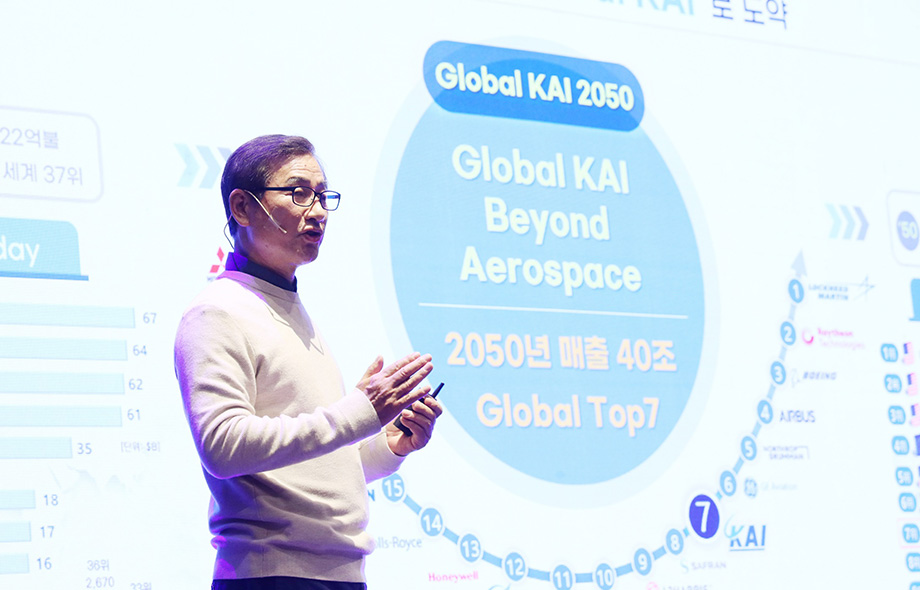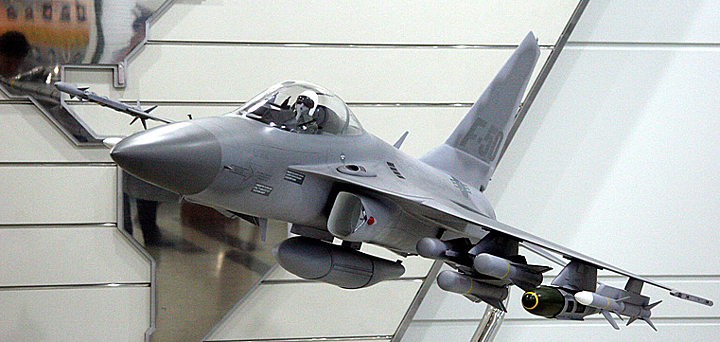KAI revives the idea of the F-50, an FA-50 derivative fighter aircraft
During a ceremony at Korea Aerospace Industries (KAI) headquarters announcing the company’s development strategy through 2050, the company’s CEO discussed future developments of the FA-50, such as its F-50 single-seat light fighter version.
In the FA-50 development pipeline, which originated with the advanced training/LIFT T-50 version for the Republic of Korea Air Force (ROKAF), KAI had planned from the beginning for the design to evolve into the development of a light single-seat multirole fighter, which it designated the F-50.
And this should come as no surprise since the development of the T-50 also involved Lockheed Martin. With American assistance, the advanced trainer was created from the design concepts and technology of the F-16, which KAI manufactures locally under license as the KF-16. Thus, the T-50 (later FA-50) always had in its DNA the potential to become the F-50, a light fighter that could do 80% of what an F-16 does, but at lower cost.

KAI proposed its single-seat fighter as a replacement for the several dozen F-5 Tiger IIs still in use in the ROKAF, but to finance the development of the F-50, the South Korean Ministry of Defense was required to commit the necessary funds. But this did not happen, as every fraction of the available budget was directed to the development of the KF-21 Boramae.
New opportunity for the F-50?
Kang Gu-young, CEO of Korea Aerospace Industries, officiated at a ceremony at the company’s headquarters in Sacheon, where he outlined his «Global KAI 2050 -Beyond Aerospace-» business strategy, which he believes KAI can become the seventh largest aerospace company in the world.

This strategy, according to Kang Gu-young, will represent a quantum leap forward for the company, based on innovation, investment in R&D and the recruitment and training of human talent.
Another of the strategies to be followed is to reduce its dependence on Korean government procurement contracts, to focus on the export potential of its products. It is from here that the possibility of the development of the F-50 arises.
The successful export of the FA-50 to Poland through close cooperation with the government and a quick response in a rapidly changing security environment confirmed the potential of the European market, which KAI had previously considered inaccessible for its products. This shift is further evidenced by Airbus Defence & Space’s approach to the Korean firm to promote the FA-50 in Western European countries, burying the AFJT, its own advanced supersonic trainer/light fighter project, along the way.
Building on the success of the FA-50, Kang Gu-young wants to establish beachheads in the European, North American, African and Middle Eastern markets (possibly through Egypt), while strengthening KAI’s presence in the Southeast Asian and South American markets.
Versions of the FA-50 tailored to the particular requirements of each export customer will be promoted, including the possibility of developing the F-50 light combat single-seat version. What was not made clear is whether the development is dependent on a potential customer financing the project, or whether KAI plans to pay for it out of its own pocket.
There are hundreds of MIG-21, F-5, A-37, A-4, Alpha Jet, L-39 and other old trainer or fighter/light attack aircraft models to be replaced by a new technologically advanced and more economical to operate platform, generating a potential market of between 800 to 1,000 of the FA-50 and F-50 category jets, of which KAI intends to take the lion’s share. And every FA-50 customer is a potential customer for the KF-21, and other military and civilian products of the South Korean aerospace company, which eventually intends to compete with the giants of Boeing and Airbus.

/https://aviacionlinecdn.eleco.com.ar/media/2023/01/KAI-F-50.jpg)

Para comentar, debés estar registradoPor favor, iniciá sesión